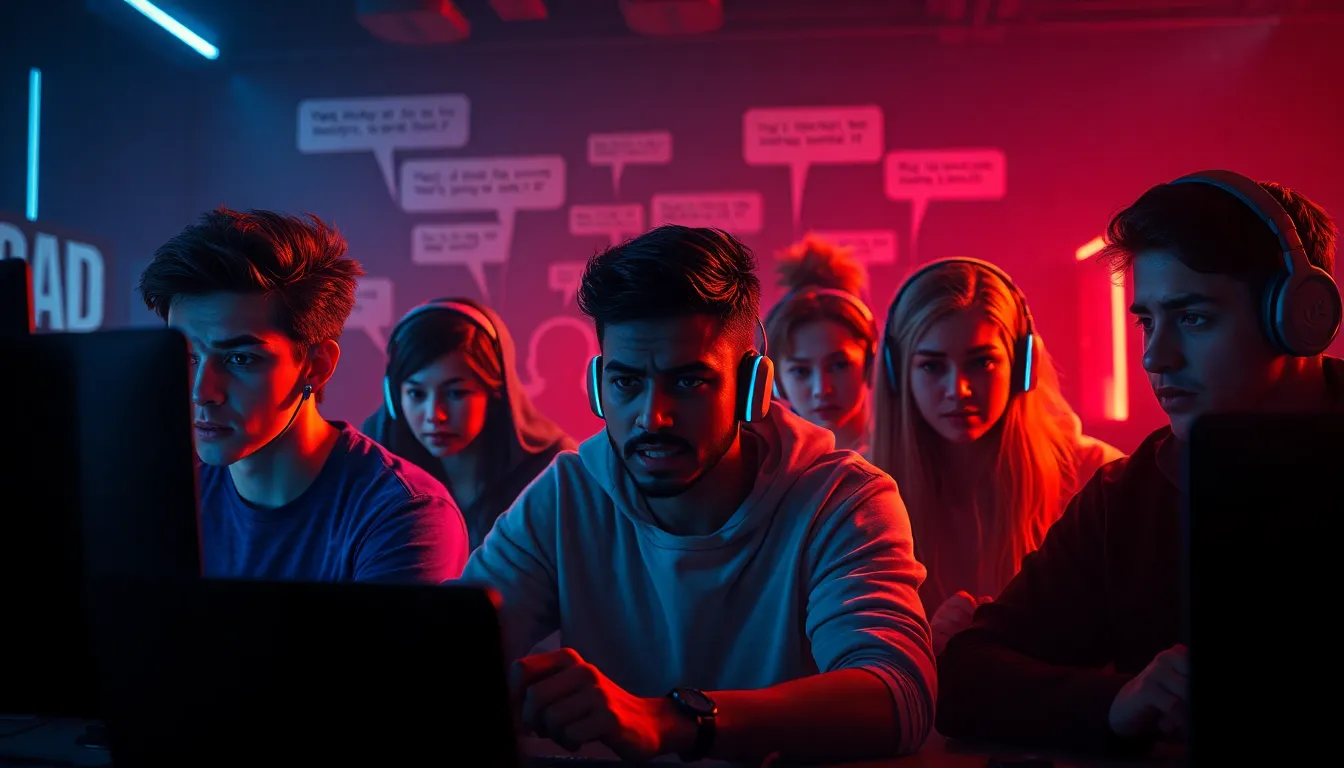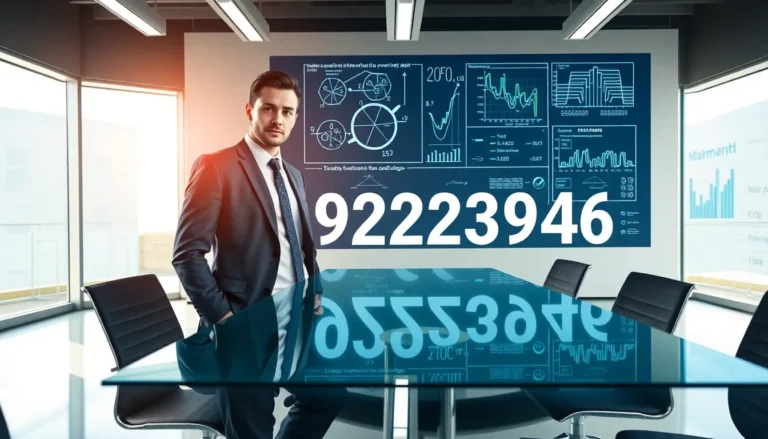Table of Contents
ToggleIn the vast oceans of pixels and avatars, there lies a hidden world that often resembles a poisonous swamp, welcome to the most toxic gaming communities. You know, the ones that could make even the most seasoned gamers cringe. From harassment to outrageous tantrums, diving head-first into these realms sometimes feels like swimming with piranhas. Curiosity piqued? Buckle up as we explore the murky depths of toxicity in gaming and reveal how to navigate these treacherous waters without losing your sanity.
Understanding Toxicity in Gaming

Toxicity in gaming refers to a range of negative behaviors that can severely degrade the online experience. This includes harassment, hate speech, trolling, and rampant negativity that turns a fun session into a battlefield. It’s not just limited to the few bad apples: sometimes, it’s an entire orchard gone wrong. Gamers can be as passionate as they are opinionated, leading to a culture where insults fly faster than game load times. But what fuels such behavior? Anonymity plays a huge role. When people can hide behind avatars and usernames, they often shed the accountability that comes with face-to-face interaction. As players, they forget, everyone behind a screen is still a human being.
Characteristics of Toxic Gaming Environments
These toxic communities share several hallmark characteristics. First, there’s the prevalence of harassment. Whether it’s bullying, doxxing, or outright verbal abuse, the sheer volume can be overwhelming. Next up, think hostile environments. Imagine stepping into a lobby where players hurl insults like confetti, making your virtual experience feel more like a horror show than a game.
Also, poor moderation exacerbates these situations. Without active and effective moderators, toxic behavior can flourish almost unchecked. Gamers, especially newcomers, often feel unwelcome. Eventually, that can have profound effects not just on gameplay, but on mental health as well.
Finally, one can’t overlook the echo chambers where toxicity festers. Groups emerge where negative attitudes and aggressive behavior are not only tolerated but encouraged, creating a degenerative cycle that’s hard to escape. Those caught in this cycle often believe this behavior is normal, it becomes part of the gaming culture they’ve chosen.
Top Examples of Toxic Gaming Communities
Some notorious examples of toxic gaming communities stand out for their particularly egregious behaviors.
1. League of Legends: This game is often hailed for its deep strategy and competition, but it’s equally infamous for its toxic communities. Players often resort to name-calling and belittling one another, a new player can find themself inundated with hostility in mere moments.
2. Call of Duty: The competitive nature of this franchise has spawned a culture rife with toxicity. Gamers have reported experiences ranging from simple trash talk to serious harassment, making it tough to enjoy the fast-paced action.
3. Overwatch: While it champions diversity and teamwork, its competitive side can turn sour quickly. Players often criticize others for character choices or gameplay styles, making it a microcosm of toxicity.
4. Fortnite: Even the brightly colored battle royale isn’t immune. With such a young audience, it’s tragic to see bullying happen here, as children engage in toxic behavior they often learn from older players.
These examples illustrate that toxicity can take root even in games designed for fun. They shine a spotlight on the darker corners of gaming culture, reminding us just how far some are willing to go to assert dominance or simply to vent frustrations.
Impact of Toxic Communities on Players
The influence of toxic gaming communities can extend beyond the virtual realm and seep into players’ real lives. Many gamers experience anxiety or anger after prolonged exposure to such negativity. Imagine logging off from a round only to find yourself replaying hostile interactions like a troubling film reel.
Also, toxic behavior can deter new players from joining these communities. Who would want to jump into a game where the local climate feels more like a war zone? This can lead to dwindling player bases, which, ironically, makes the remaining players even more entrenched in their toxicity. The feeling of isolation grows, creating a vicious cycle that can have very real emotional consequences. Throughout, this environment can impact mental health, with increased reports of depression and anxiety linked to gaming experiences. It’s a troubling trend that raises critical questions about how gaming communities can evolve to create a more welcoming atmosphere.
Strategies for Coping with Toxicity
So, what can gamers do to protect themselves while navigating these digital minefields?
1. Mute and Block: It may sound simple, but muting or blocking toxic players can save hours of mental anguish. Many games allow you to easily cut negative interactions out of your experience.
2. Report: Take advantage of reporting tools to highlight problematic behavior. Developers often take these reports seriously and may carry out bans or sanctions.
3. Find Supportive Communities: Transitioning to friendlier online spaces becomes important. Many gaming communities prioritize respect and inclusivity, making them much more enjoyable.
4. Don’t Engage: Sometimes, the best response is no response. Ignoring toxic players takes away their power, disrupting their cycle of negativity.
5. Take Breaks: Stepping away from the game can be invaluable. Whether it’s a short break or a longer hiatus, it can help players gain perspective and recharge their mental health. Remember, gaming is meant to be fun, not a source of stress.
The Future of Gaming Communities
There’s hope on the horizon. As more gamers become aware of the toxicity prevalent in many communities, initiatives are blossoming to foster healthier environments. Game developers are increasingly implementing stricter rules against harassment and bolstering their moderation teams. Positive reinforcement programs that reward good behavior are also becoming more popular. These changes show promise for a more inclusive gaming landscape. With the rise of accountability and the promotion of respect, the future of gaming communities might be brighter than it looks. Gamers, creators, and developers alike have a role to play in shaping a new era, one where fun and fellowship thrive over toxicity.




